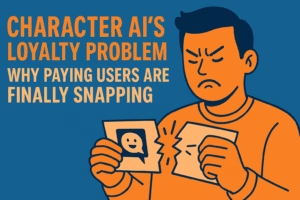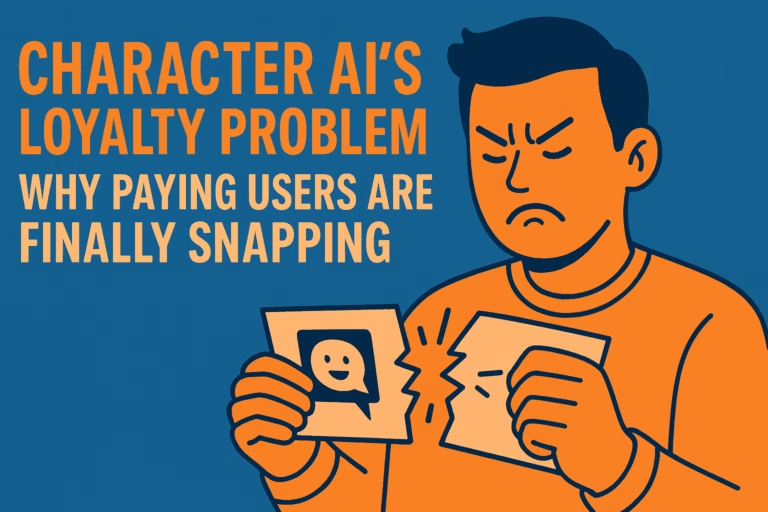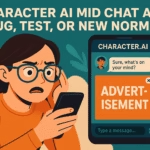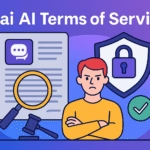- Premium members faced bugs, ad interruptions, and lost tokens -the trust damage cut deeper than the glitches.
- Silence from developers made paying users feel invisible, turning financial support into frustration.
- Most anger came from emotional betrayal, not greed; people felt the brand they loved stopped respecting them.
- Transparency and consistent communication are more powerful loyalty tools than new features or price cuts.
- The moment users stop feeling like partners, they start feeling like products – and that shift kills communities.
It started with one sentence that summed up the mood of a thousand frustrated voices:
“I’m a paid member. Paid. And now I’m watching ads?”
That comment has now become the rallying cry for disillusioned subscribers. For years, Character AI felt like a safe haven – creative, personal, and unpretentious. Users paid not for perks, but for peace.
They believed the money kept the lights on, protected their stories, and separated them from the chaos of free-to-play distractions.
Then came the “Imagine turns” limit. Then the bugs. Then the ads. And somewhere along the way, something cracked. Paying users suddenly realized they were being treated no differently from free ones.
The subscription badge lost meaning overnight.
These Character AI paid users weren’t angry at a glitch. They were angry at the feeling that loyalty no longer mattered. What used to feel like partnership now felt like being milked for patience.

How the Trust Broke
The collapse wasn’t a single bad update. It was a slow drip of disconnection.
First came the “Imagine turns” system – a hard cap on image generation, even for premium accounts. Then the errors. Users would hit “generate,” watch the process fail, and still lose a token for a picture that never appeared. Each failed attempt felt like throwing coins into a slot machine that never spins.
Next came the ads. Yes, ads – even for paid members. Mid conversation, screens froze as promotions appeared like uninvited guests. The irony was painful. These were the same people who had subscribed precisely to avoid this.
Finally, a new glitch surfaced. Subscriptions weren’t being recognized by the app at all. People were paying but being treated as free users. Some blamed Google billing, others the developers. No one got a clear answer.
The frustration wasn’t just technical. It was emotional. Paying users felt invisible – shouted down by “dev defenders” online while watching their favorite app rot under broken features and silent leadership.
Below is a table summarizing the pattern that turned quiet disappointment into open revolt.
| Trigger | Result | User Reaction |
|---|---|---|
| Failed image generations | Tokens deducted despite no output | Refund threads and angry posts |
| Ad interruptions during chats | Even premium users saw mid conversation ads | Outrage, disbelief, and cancellations |
| Subscription recognition bug | Paid accounts mistaken for free | Loss of trust and sarcastic “dev pet” memes |
Each row here represents more than a software glitch – it represents a broken promise.
When the most loyal users start saying “I used to love this app, but now I’m done,” it’s not a complaint.
It’s a resignation letter.
“Greedy” or Just Drowning?
Anger online spreads fast, but underneath the noise there’s a quiet truth – people lash out hardest when they feel unheard.
The phrase “the devs are greedy” popped up in nearly every comment, sometimes as sarcasm, sometimes as pure exhaustion. But if you peel it back, what users are really saying is “we trusted you.”
They believed paying meant protection from chaos. Now, after endless bugs, missing features, and even ads, that belief feels like a joke.
Still, this isn’t a cartoon villain story. Running an AI platform costs money – a lot of it. Large language models are expensive to maintain. Image generation eats GPU cycles by the second.
And lawsuits don’t pay for themselves. There’s logic behind monetization, but the rollout betrayed the execution.
The problem isn’t that Character AI needs revenue. It’s that their approach made users feel like collateral damage in the process.
The messaging gap turned financial necessity into perceived exploitation. Silence, not greed, became the villain.
Here’s how the gap between intent and perception plays out:
| Developer Intent | User Perception |
|---|---|
| Add ads to sustain infrastructure | “They broke what made this app unique” |
| Limit image generation to control costs | “They charge us for failed features” |
| Implement child-safety monitoring | “They’re harvesting personal data” |
Each misunderstanding widens the emotional distance between the company and its fans. A single line of communication – a tweet, a pinned post, a roadmap – could have softened this entire storm.
Instead, people are left to connect their own dots, and when users fill the silence themselves, they usually draw monsters.
A Loyalty Collapse in Real Time
The community’s meltdown didn’t come overnight. It unfolded like a breakup – disbelief first, anger second, acceptance last.
At first, users assumed it was a bug. Reddit threads were full of optimism. “It’s probably temporary,” one user wrote. “Give it a few hours.” But the hours stretched into days. Then came the screenshots – ads mid chat, tokens gone, premium status missing. The comments turned sharper.
“I used to defend this app,” one said. “Now I feel stupid for doing it.”
“I was happy to pay because I loved it. Not anymore.”
“I can’t even use the feature I paid for, and they act like I should be grateful.”
That tone shift – from belief to betrayal – is something every tech company should fear. You can fix a glitch, but not a broken relationship.
Here’s how the emotional arc of the meltdown looks when mapped out:
| Phase | User Reaction | What It Means |
|---|---|---|
| Denial | “It’s a glitch. It’ll be fixed soon.” | Users still hopeful and patient |
| Anger | “I paid for this? Are you serious?” | Trust fractures and refund talk starts |
| Resignation | “Once my subscription ends, I’m out.” | Loyal users quietly exit |
You can feel the heartbreak between the lines. This wasn’t just a loss of features – it was a loss of belonging. For many, Character AI wasn’t a tool. It was therapy, entertainment, and community rolled into one.
Now those same users are documenting their slow departure, one canceled renewal at a time.
The final insult? Some of them still hope the devs will fix it – which only proves the bond isn’t entirely gone. It’s cracked, but not beyond repair. Yet.
The Bigger Lesson
The meltdown around Character AI isn’t just another internet tantrum. It’s a case study in how loyalty dies – not in a bang, but in a quiet sequence of letdowns.
The truth is simple. People don’t subscribe to software. They subscribe to certainty. When you pay for a tool, you’re really buying the promise that it will work when you need it to. Once that promise cracks, every update feels like manipulation instead of improvement.
Character AI paid users weren’t asking for miracles. They were asking for honesty. Tell them if costs went up. Tell them if something broke. Instead, silence filled the gap – and silence always gets interpreted as indifference.
When users feel dismissed, they start narrating the story for you. “The devs are greedy.” “They’re selling data.” “They don’t care anymore.” These may not all be true, but they spread because people need explanations that feel emotional, not logical.
Here’s what other AI platforms can learn from this moment:
| Lesson | Why It Matters |
|---|---|
| 1. Paid users expect consistency, not surprises | Even small bugs feel like betrayal when money is involved |
| 2. Communication is the real customer service | Silence turns technical issues into personal offenses |
| 3. Transparency is cheaper than damage control | A simple roadmap can prevent weeks of outrage |
This isn’t the first time an AI platform stumbled on its own success, and it won’t be the last. But the lesson is permanent: the moment users stop feeling like partners, they start feeling like products.
Winding Up
Character AI didn’t lose users because it failed technically. It lost them because it broke something emotional.
People will forgive a glitch. They’ll even forgive ads, if you explain them. What they won’t forgive is being treated like they don’t matter after paying to be part of something they believed in. That’s where loyalty dies — not from bugs, but from silence.
Every company wants passionate users until those users turn their passion into protest. What happened here is not a revolt against monetization. It’s a rejection of disrespect.
Character AI can still pull itself back. The fix doesn’t require a new model or expensive PR. It just requires listening — and admitting that the people funding your dream deserve better than “wait and see.”
Because once users stop hoping you’ll improve, they stop watching altogether. And that silence is far costlier than any lawsuit or server bill.


